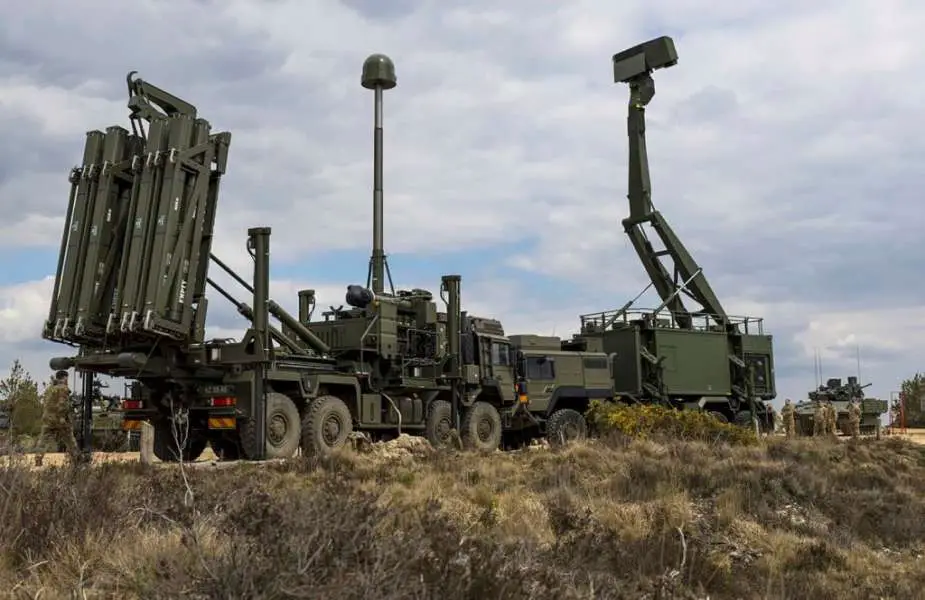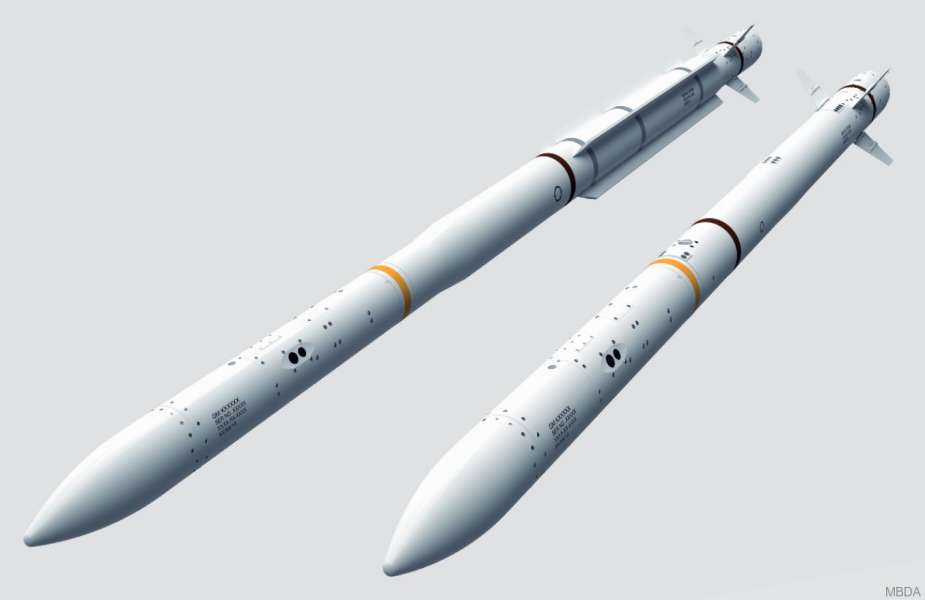Breaking news
Brazil eyes MBDA's EMADS System for strategic air defense program.
On April 18, 2024, the Spanish media outlet Infodefensa announced that MBDA, a European defense company, has responded to a tender issued by the Brazilian Army for the Enhanced Modular Air Defense Solutions (EMADS) system as part of the army's strategic air defense program.
Follow Army Recognition on Google News at this link

MBDA Land Ceptor air defense system based on CAMM (Common Anti-Air Modular Missile) (Picture source: MBDA)
In recent years, the Brazilian Army has expressed its intention to strengthen its air defense capabilities by considering the acquisition of a new medium-range air defense system. Currently equipped with systems such as the Gepard vehicles and Igla and RBS 70 NG missiles, the army has launched several tenders to assess supply capabilities, including through the RFQ No. 01/2023 announced in November 2022 as part of the Strategic Air Defense Program (Prg EE DAAe). On November 9, 2023, it published document EB70-RO-10.001, defining the operational requirements for a future medium-range defense system, highlighting the need for integration with current aerospace command, control, and surveillance systems. Although specific proposals remain confidential, systems such as the Common Anti-Air Modular Missile (CAMM) family could be considered, reflecting potential collaboration with companies like IAI or MBDA.
EMADS, an acronym for Enhanced Modular Air Defense Solutions, is a modular and rapidly deployable air defense system designed to protect strategic points and areas housing high-value assets, whether mobile or stationary. This all-weather system protects a wide range of conventional and complex aerial threats, including low and high-altitude terrain-dependent threats. EMADS uses the Common Anti-Air Modular Missile (CAMM) family, adapted for both land and maritime environments. With the integration of advanced technologies, the system offers comprehensive protection against all known and anticipated aerial threats.
The CAMM missile family includes several variants, such as the sea-based CAMM-ER (Extended Range) and the ground-based Land Ceptor. The CAMM-ER is designed to be launched from military ships, while the Land Ceptor is intended for terrestrial air defense systems.
The Land Ceptor air defense system based on CAMM has been in service with the British Army since 2018. The system was procured under a contract awarded to MBDA in 2014, which covered the development, production, and integration of the Land Ceptor into the army's air defense structure.
Poland also selected the CAMM air defense system for its national air defense capabilities. In 2018, the Polish Ministry of Defense signed a contract with MBDA for the acquisition of the CAMM-based air defense system, which will be delivered as part of the Wisła program.
CAMM missiles are designed to be highly maneuverable, using thrust vectoring technology to provide increased agility and precision. They are also equipped with active radar homing seekers, enabling them to detect and track targets even in cluttered environments.
Overall, the CAMM missiles are regarded as highly effective air defense systems, providing effective protection against a range of aerial threats in various operational environments.
The CAMM (Common Anti-Air Modular Missile) air defense system utilizes the CAMM missile, a family of missiles developed by MBDA. The CAMM missile family includes several variants, such as the sea-based CAMM-ER (Extended Range) and the ground-based Land Ceptor.
The CAMM missile is a highly maneuverable missile, using thrust vectoring guidance technology to offer increased agility and accuracy. It is equipped with active radar homing seekers, allowing it to detect and track targets even in cluttered environments. The missile also has a two-way data link, enabling it to receive updated target information while in flight.
The Land Ceptor variant of the CAMM missile used in the British Army's air defense system has a range of up to 25 km and can engage targets at altitudes up to 8 km. The missile is carried in a launcher capable of holding eight missiles at a time. The launcher is integrated with a fire control system, providing target acquisition and engagement capability.

Common Anti Air Missile (Picture source: MBDA)


























